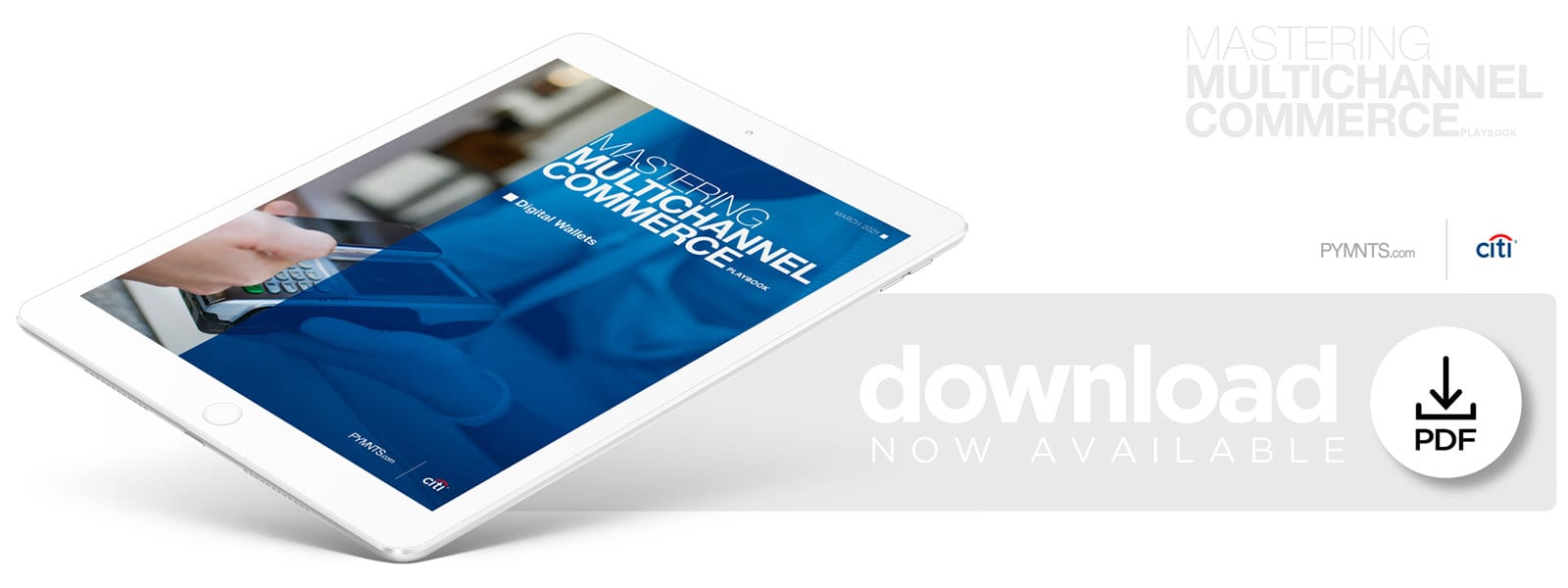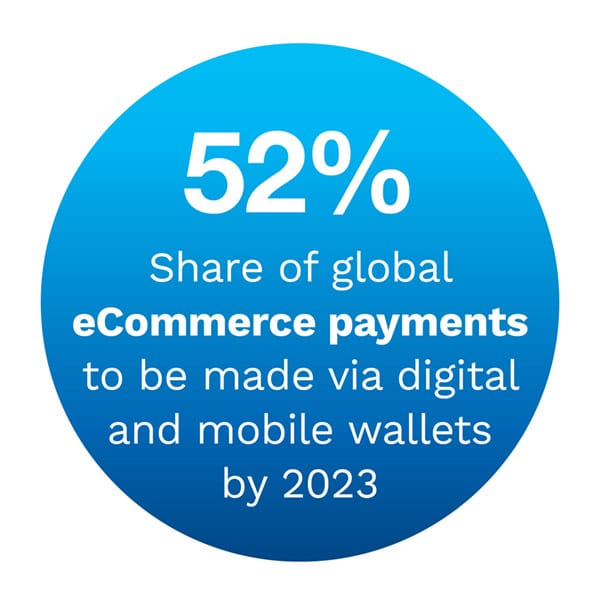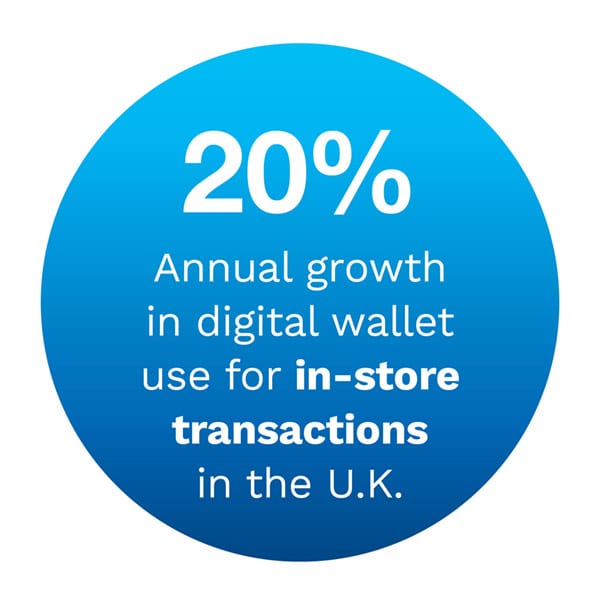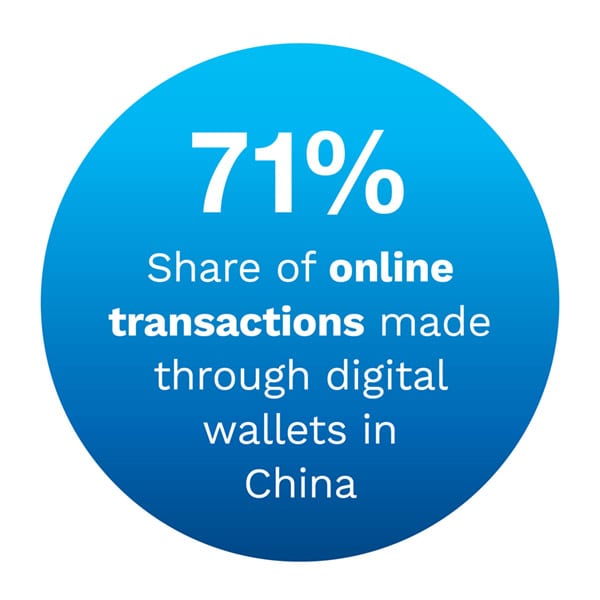NEW REPORT: The Multichannel Guide To Boosting Digital Wallet Adoption

 Consumers’ use of digital and mobile wallets has tripled in the past three years and has only been accelerated by the pandemic, as consumers have shifted to online and mobile shopping and away from physical cash and card payments within the past year.
Consumers’ use of digital and mobile wallets has tripled in the past three years and has only been accelerated by the pandemic, as consumers have shifted to online and mobile shopping and away from physical cash and card payments within the past year.
 The result is that an estimated 13 percent of the world’s population made purchases using digital and mobile wallets in 2020, and these wallets will be used to pay for more than 52 percent of eCommerce transactions by 2023. Though adoption varies across the globe, these tools are playing an increasingly important role in how consumers shop and pay in both emerging markets and developed economies.
The result is that an estimated 13 percent of the world’s population made purchases using digital and mobile wallets in 2020, and these wallets will be used to pay for more than 52 percent of eCommerce transactions by 2023. Though adoption varies across the globe, these tools are playing an increasingly important role in how consumers shop and pay in both emerging markets and developed economies.
This increased consumer adoption of digital and mobile wallets gives payors in a variety of areas the opportunity to use these wallets as disbursement endpoints. Governments, especially those in emerging markets, are turning to digital wallets to disburse aid to consumers, and gig platforms pay workers via digital wallets, for example. Airlines and hotels are also using digital wallets to issue vouchers and faster refunds to customers.
The fourth installment of the Mastering Multichannel Commerce Playbook series, a PYMNTS and Citi collaboration, examines the evolving digital and mobile wallet ecosystem in varying regions worldwide as well as the opportunities for businesses to leverage these secure digital endpoints for disbursements liquidity.
The interest in and affinity for using digital wallets has significantly increased among consumers in North America, as less than 38 percent of United States consumers were using digital wallets to make purchases prior to the pandemic in 2020 as frequently or more frequently than they did in 2019, whether shopping in-store or online. Over the last year, that number has jumped to 55 percent, remarkably.
At the same time, eCommerce had been steadily growing in Latin America over the past few years. Since the pandemic began, however, 11 million consumers are estimated to have made their first online purchases. This shift is bringing 38 percent of the Latin American population into the digital fold and eCommerce sales are expected to grow by 19 percent overall, reaching $84 billion in value.
While Europeans have a lower mobile wallet adoption rate due to a high dependence on cash and high costs associated with accessing financial services, some 59 million consumers in Western Europe used their smartphones to make purchases, up from 50 million in 2019.
High mobile penetration in the Middle East makes mobile wallets uniquely poised for growth, especially in Saudi Arabia, the United Arab Emirates and Israel. The value of mobile transactions in Africa meanwhile has grown 890 percent since 2011 and now accounts for 46 percent of mobile transaction volume in the world.
 The Asia-Pacific region seems most advanced with digital and mobile payments as such offerings as WeChat Pay and Alipay are now the preferred payment method for both online and point-of-sale transactions in China’s developing market, accounting for 71 percent and 41 percent of all transactions, respectively.
The Asia-Pacific region seems most advanced with digital and mobile payments as such offerings as WeChat Pay and Alipay are now the preferred payment method for both online and point-of-sale transactions in China’s developing market, accounting for 71 percent and 41 percent of all transactions, respectively.
Digital wallets are also increasingly being leveraged by businesses in developed economies to make disbursements to customers for everything from offering refunds and rebates to issuing insurance claims. In emerging economies, however, digital and mobile wallets are used for the exact opposite reason where they serve as bank accounts for the underbanked and unbanked. Emerging markets are also witnessing the arrival of super apps which provide users with single accounts that can be used to manage and spend funds.
This is just a few of the insights outlined in this playbook. To learn more about how consumers are using digital and mobile wallets in global regions and how businesses can accommodate their needs, download the playbook.